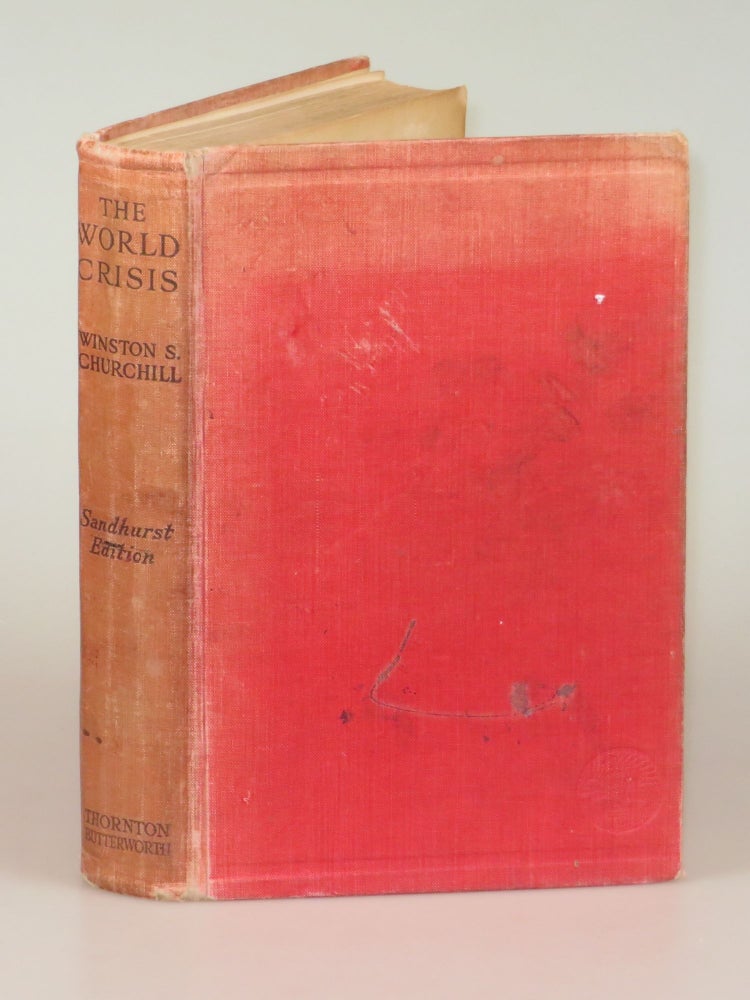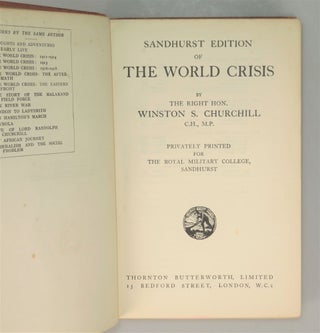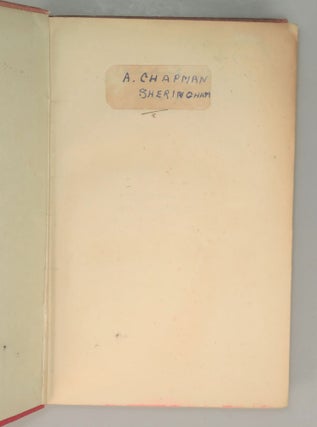The World Crisis, Sandhurst Edition
London: Thornton Butterworth Limited, 1933. Sandhurst abridged edition. Hardcover. This is the scarce and desirable “Sandhurst Edition” of The World Crisis – Winston Churchill’s history of the First World War. Churchill played a critical, controversial, and varied role in “The war to end all wars” a quarter of a century before he led Britain during the Second World War. His epic history of the conflict was originally published in six volumes between 1923 and 1931, followed in that year by a first abridged and revised edition which added new material.
This 1933 “Sandhurst Edition” was a special – indeed unique – new abridgment, the completely reset text featuring chapters selected by Churchill from his 1931 abridged and revised edition. Only 1,354 copies were printed for the Royal Military College as a cadet textbook. We recently acquired a trove of a dozen copies laboriously sourced over long years by a college professor – more copies than we have encountered in the entire time we have been offering works by and about Churchill.
This edition was a textbook, so nearly all copies have seen considerable wear and bear the consequences of heavy use. Moreover, the red cloth bindings proved highly susceptible to sunning. This particular example is only in good condition, complete but certainly looking like the used, venerable textbook it is. The binding remains intact but shaken, toned at the upper front and rear covers and spine, as well as being generally scuffed and stained, with minor fraying to the spine ends and corners. The contents are respectably clean, with no annotations. A (presumably cadet) name is inked on a sticker affixed to the front free endpaper recto. Spotting is modest, primarily confined to prelims and page edges. Cosmetic gutter splits at the front endpapers and pp.510-11 expose the mull beneath but do not yet affect binding integrity.
Founded in the 18th Century, Sandhurst was, as Field-Marshal Bernard Law Montgomery, 1st Viscount of Alamein, called it, “the cradle of the British Army”. Today’s Sandhurst is the descendant of two famous cadet establishments - the Royal Military Academy, Woolwich and the Royal Military College, Sandhurst – which in 1947 merged. Winston S. Churchill entered The Royal Military College, Sandhurst, as a cavalry cadet in 1893 and passed out of Sandhurst in December 1894, to be commissioned a second lieutenant in the Fourth Queen’s Own Hussars. Sandhurst proved formative for Churchill. His career as an officer and war correspondent both proved his valor and made him famous, leading to his first election to Parliament in 1900.
The Churchill who prepared this text for the cadets at his military alma mater had seen more of war from more perspectives than most of Britain’s great generals. Churchill’s firsthand knowledge of war spanned the frontiers of colonial India to “the last great British cavalry charge” on the banks of the Nile, and the corridors of Whitehall to the trenches of Flanders. His service in the British Cabinet – as First Lord of the Admiralty, Minister of Munitions, Secretary of State for War, and Secretary of State for Air - had seen him preside over all aspects of Britain’s fighting services.
Just as Churchill was in a special position to prepare this text for Sandhurst, he was also in a special position to write the history of the First World War, which nearly cost him both his political and corporeal lives. First Lord of the Admiralty from 1911 until 1915, after the Dardanelles disaster, Churchill was scapegoated and forced to resign. He spent political exile as a lieutenant colonel of a battalion in the trenches. Before war's end, Churchill was exonerated and rejoined the Government, foreshadowing the political isolation and restoration he experienced leading up to the Second World War. Fittingly, it was during Churchill’s 1930s “wilderness years” that he shared his history of “The war to end all wars” with cadets at the institution through which he had passed four decades earlier.
Reference: Cohen A69.8, Woods/ICS A31(c), Langworth p.117. Item #006587
Price: $160.00





